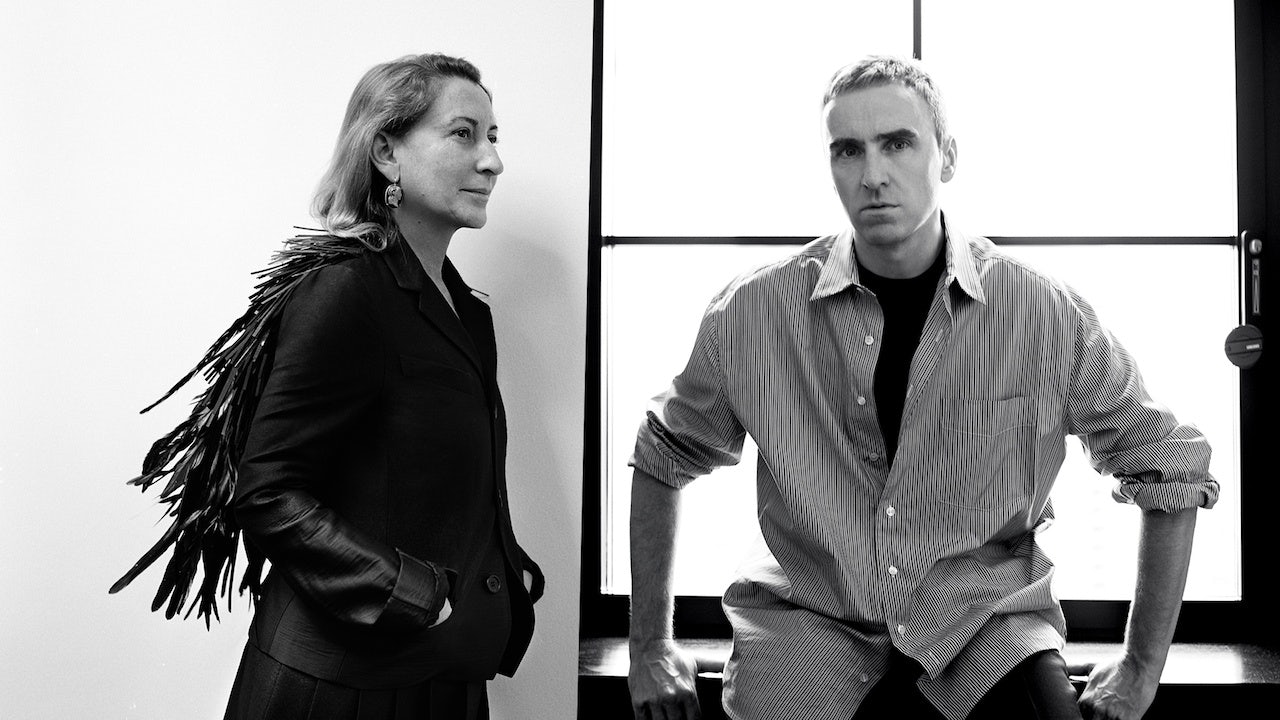What happened
Sunday night, while much of China was dealing with repercussions from the Covid-19 virus, a breaking news item that had nothing to do with the ongoing crisis quickly dominated Chinese fashion insiders’ news feed — Raf Simons was joining Prada as a co-creator with Miuccia Prada, starting April 2, 2020.
The news immediately sparked waves of discussions in China, which were overwhelmingly positive. On WeChat, many fashionistas’ mourned, in jest, how their wallet would bleed and how much they were looking forward to Prada’s upcoming Spring/Summer 2021 womenswear show, the first collection to reveal the two legendary designer’s new vision.
Under the brand’s announcement post on Weibo, comments like “two of my favorite designers” and “ looking forward to seeing Cai wear the new designs,” were written by feverish fans of idol Cai Xunkun, the spokesperson of the brand China, some even posted a photo of their idol sporting a Raf Simons design.
Jing Take:#
This is exciting news, as reflected by both fashion insiders and consumer’s reactions online. However, this doesn’t diminish the potential barrier that lays ahead for the Italian megabrand, especially in the Greater China market, which accounts for approximately 22 percent of Prada’s business.
In their first-half earnings release, Prada sales dropped two percent in Greater China, while rival groups like LVMH and Kering celebrated double-digit growth, signaling, perhaps, a lack of commercially-driven “it items” that connected with mainstream shoppers. However, this wasn’t from a lack of effort, as the brand has been bullish about this market. Besides the visible success of the relaunch of its 2005 nylon shoulder bag in China, they have also launched all kinds of localized creative campaigns.
Their most recent Chinese New Year campaign, featuring model Chun Jing’s journey home, is a thoughtful case study demonstrating western brands' understanding of the Chinese holiday spirit. In addition, by teaming up with celebrities in China, the brand continues to act as an agency of shifting cultures. For example, it tapped Gen-Z idol, Cai Xunkun, to make a conceptual video exploring the state of “idol culture.” It also invited actor Wei Daxun to advocate an eco-nylon sustainability project. Needless to say, Rongzhai in Shanghai continues to act as a home base of Prada in China, becoming a favorite gathering spot of art lovers and sophisticated fashion admirers in China.
While investors and shareholders-alike wait for Prada to channel initiatives like these into financial gains, will the addition of Raf Simons help close the fashion house’s perceived gap between fashion insiders and mainstream consumers? The results of Simon’s last venture at Calvin Klein, which lasted a short two years, was less than satisfactory, due to an uneven financial performance amid the brand’s high-fashion transformation.
Nevertheless, it’s a daring move for the over one-hundred-year-old brand that’s majority-owned by the Prada family. While many luxury brands are reacting to commercial needs rather than leading the trend, we look forward to seeing how this legendary creative-duo to be an agency of change.
The Jing Take reports on a leading piece of news while presenting our editorial team’s analysis of its key implications for the luxury industry. In this recurring column, we analyze everything from product drops and mergers to heated debates that sprout up on Chinese social media.
